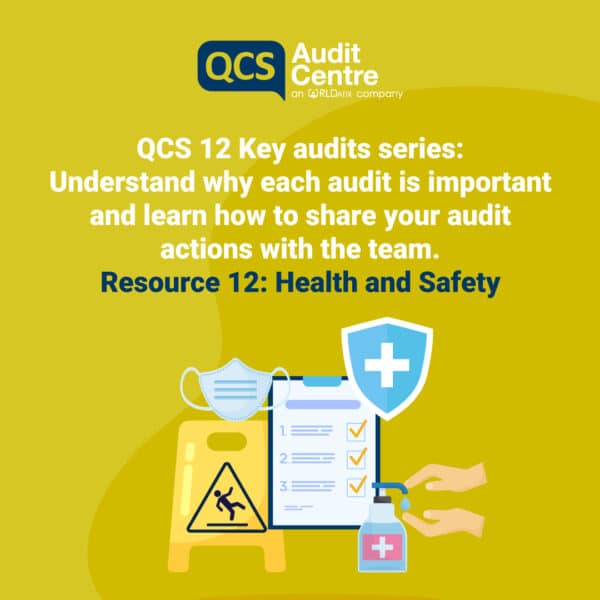Why do we need to complete audits?
The Health and Safety at Work etc. Act 1974 places general duties on employers to ensure, so far as reasonably practicable, the health, safety and welfare of all their employees. It is therefore important to find out if you are meeting this general duty, other statutory requirements and adherence to industry best practice. To find out if you are in fact compliant and that your current safety management systems are suitable and are being adhered to, a health and safety audit is essential.
Auditing is an active monitoring technique that allows you to ensure health and safety standards in your workplace are suitable and sufficient before any ill-health, incidents or accidents occur. Where improvements are needed, they will allow your organisation to identify the reason for the non-compliance and the corrective actions that can be put in place to resolve it.
Health and Safety: The case for auditing
As an organisation you will want to establish your compliance with health and safety legislation applicable to your activities. You will want to know if what you are currently doing is up to standard and understand, what (if anything) you may not be doing.
The Health and Safety Executive guidance document: HSG65 – Managing for health and safety, explains the Plan, Do, Check, Act approach to managing health and safety.
Auditing is therefore one technique of many that that can assist you in the monitoring of your health and safety arrangements to ensure that risks are being adequately controlled – this is the Check element of the HSG65 model. A well-constructed health and safety audit will include your findings, recommendations and an action plan which will help you to act on the findings and any lessons learned.
A typical health and safety audit should look at the following:
- Compliance with legislation and statutory requirements
- Adherence to industry best practice and guidance
- Safety management arrangements
- Safety documentation including policies, risk assessments, statutory inspections and safe systems of work
- Monitoring of health and safety performance (both active and reactive)
- Any health monitoring and surveillance programs in place
- Training programs and records including induction and periodic refreshers
Therefore, a good health and safety audit helps you to:
- Establish your compliance with applicable health and safety legislation
- Establish your adherence to recognised industry best practice applicable to your organisation
- Identify opportunities for continual improvement and development of your health and safety management system
- Ensure your health and safety standards in your workplace are suitable and sufficient before ill-health, incidents or accidents occur (ultimately, this could save money in the long-term as you may be reducing the likelihood of civil claims arising and the potential subsequent raise in insurance premiums)
- Reduce the likelihood of potential breaches and subsequently reduce the likelihood of fines or prosecutions
- Reduce accidents and incidents in your workplace
Health and safety: Achieving compliance
Audits enable you to provide valid, up-to-date evidence to the CQC that you are managing the health and safety process effectively and meeting the required regulations, such as:
Findings: What does the health and safety audit tell you?
It is good practice to prioritise your findings in your audit report. A RAG system (Red/Amber/Green) or similar can be used for this purpose.
Example 1: The audit reveals serious breaches of legislation
A finding categorised as red, for example, could indicate a significant risk of serious injury or major breach of statutory requirements. An example of this could be no fire risk assessment in place, or not up to date, or the risks posed from asbestos or legionella have not been assessed. There are specific pieces of legislation that cover these areas; The Regulatory Reform (Fire Safety) Order 2005, The Control of Asbestos Regulations 2012 and Control of Hazardous Substances Hazardous to Health, respectively. By not controlling these risks, employees can be exposed to ill-health or injury and so these findings would need to prioritised and remedial actions taken as soon as possible.
Example 2: The audit reveals an opportunity for improvement
A finding categorised as green, for example, could indicate an opportunity for improvement that can improve the level of safety and portray a better image within the company. An example of this could be where meetings or briefings take place on a regular basis, but there is no documented evidence of this such as meeting notes or minutes. By keeping records of this, you would be able to evidence that certain health and safety topics have been discussed with relevant employees. A timescale for this to be implemented may be 6 months or at the next audit, for example.
So, what happens next?
The completed audit report should be shared with all relevant people within your organisation, including those who have been assigned any of the corrective actions.
The audit recommendations and action plan should be reviewed periodically thereafter to track how progress is being made against the timescales detailed.
The action plan should be updated once an action has been completed. You should detail what corrective actions were implemented, by whom and the date they were carried out.
The audit process can be repeated, e.g. on an annual basis, which will allow you to see if health and safety standards are being kept up to standard and to show how the organisation has progressed from previous audits.
Effective auditing can also encourage providers and staff to have confidence in your processes and in turn foster an open and transparent culture, where staff feel comfortable reporting concerns and suggestions for improvement, especially if this is part of a no blame culture.
But it does not stop once the audit is complete. Your good governance systems then take over creating an environment where learning and improvement thrive, benefiting the safety and wellbeing of those receiving care and support.
Once you have had chance to review your audits, you can then (if needed):
- Allocate resources
- Implement prevention measures
- Increase/implement/refresh staff training
- Consider environmental changes
- Consider the use of assistive devices
- Share the findings and actions with the team





